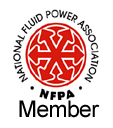ENVIRONMENT
We take ours and your environment seriously at CSB!
Our Contributions
•Reduced product weight which reduces raw material consumption.
•Designing products that require less energy to operate machinery by reducing friction.
•Non – Polluting materials used in all of our bearings.
•CSB products conform to ROHS and REACH regulations.
•CSB practices energy and material saving practices at all manufacturing facilities.
•CSB Bearings produce far less scrap and consume far less energy than conventional bearing producers.
Environment management in CSB Self-lubricating Bearing manufacturing process
During the manufacturing process, CSB strictly control all the activities under the rules and regulations of ISO14001. Reduce possible cost by means of technical and management improvement in order to reduce carbon emissions.Increase automatic lines to reduce process cost.
•To save water consumption by improving cleaning technology.
•To terminate the surface plating process by special technology improvement in order to reduce environment pollution.
•Applying the recycling technology to reduce the consumption of oil and raw material.
•Reduce paper consumption by using advanced management software system.
•Technical improvement helps to reduce previously abundant works for saving office supplies.
•Internal reviewing of water, power and oil consumption control to enhance the environment protection activities.
•Strictly control of waste gas, water and industrial residue disposal.
• Introducing the concept of OHSAS 18001 management system to support the management policy of the company.
CSB declaration of hazardous substances management regulations
We declare that all the materials with the symbol of
 are conformed to the regulations of RoHS (2011/65/EU) and ELV(2000/53/EC) as well as REACH(2006/12/18).
are conformed to the regulations of RoHS (2011/65/EU) and ELV(2000/53/EC) as well as REACH(2006/12/18).

Material with this symbol conforms to the European RoHS directive.
RoHS(2011/65/EU)
On June 4,2015, The European Union officially issued the latest regulation (EU) 2015/863 and added another four HS in Annex II of (2011/65/EU) as the updated RoHS 2.0. They are DEHP,BBP,DBP and DIBP. The updated regulation limited the four mentioned HS should be not over 0.1% in weight of a single part of the material used for manufacturing the electronic devices.
ELV(2000/53/EC)
ELV is a regulation issued by the European Parliament and Council concerning end-of life vehicles should be harmonized in order to minimize the impact of end-of life vehicles on the environment, thus contributing to the protection, preservation and improvement of the quality of the environment and energy conservation. The regulation clearly states that the following heavy metals are forbidden to be used in the manufacturing of new vehicles from the date of July, 2003.
Among of all the materials, the four heavy metals are limited as below:
•Cd≤100ppm (0.01%)
•Hg≤1000ppm (0.1%)
•Pb≤100ppm (0.1%)
•CrVI≤1000ppm (0.1%)
